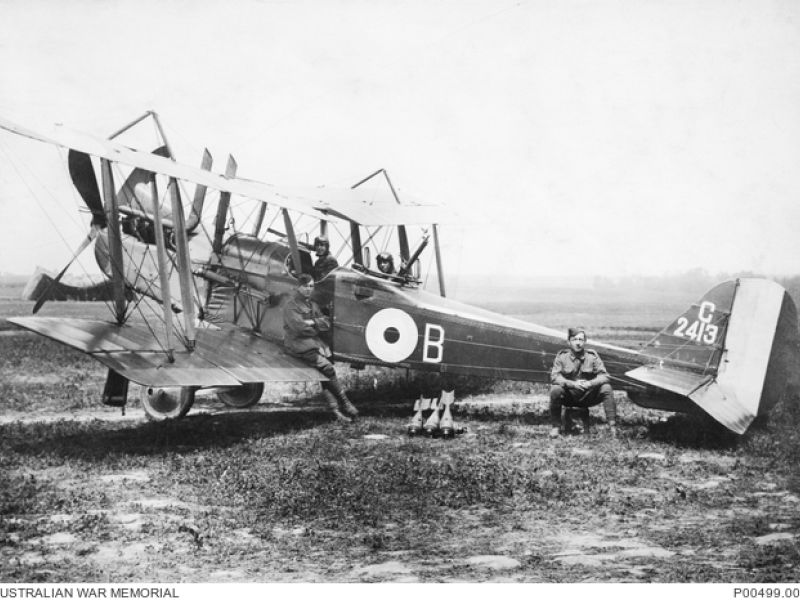Lieutenant Edward John Bice No. 3 Squadron, Australian Flying Corps
Edward Bice was born in 1891 in Melbourne, the only son of three children of William and Annie Bice. Edward’s father worked in a manufacturing company producing saddlery and ironmongery. Young Edward received his education at the Canterbury Grammar School in Victoria, and went on to work as an engineer.
Edward Bice enlisted in the Australian Imperial Force on 6 March 1915. He was assigned to the 24th Battalion and embarked from Melbourne aboard the troopship Euripides in May. He reached Gallipoli in November, and was promoted to corporal, and then sergeant. Shortly after his promotion, Bice was taken ill with a severe case of dysentery and he was sent to Alexandria and then Cairo to recover in hospital. He re-joined his unit in 1916 and departed for the Western Front as a sergeant in the 6th Machine Gun Company in March. In January 1917, after acting as sergeant major for his company, Bice was promoted to lieutenant.
Bice’s first major action on the Western Front was the second battle of Bullecourt. The initial attack in April had been a disaster. Allied forces attempted to break through the Hindenburg Line, but troops failed to receive adequate reinforcement from tanks and artillery, and were unable to hold their objectives. Casualties amounted to more than 3,000 men killed or wounded.
On 3 May the second attack at Bullecourt took place. This attack was more successful than the first and the township of Bullecourt was secured just 12 days later. Lieutenant Bice was wounded in the neck during the battle and was later awarded the Military Cross for bravery in the field. His citation stated:
“He remained on duty after being wounded and kept his gun in action under heavy bombardment causing many casualties during the enemy counter attacks. On two occasions he organised his teams as bombers and assisted the infantry in bombing the enemy back.”
In August, Bice was sent to London and transferred to the Australian Flying Corps. He received training at the Reading School of Aeronautics in order to become a pilot. While training in England, Bice met and married an English girl named Hannah Barder. In April 1918 he graduated as a pilot and was assigned to Number 3 Squadron, Australian Flying Corps.
In 1918, No. 3 Squadron was moved to the Somme Valley in Northern France where it undertook reconnaissance missions to locate enemy artillery. In August, the squadron played a major role in the battle of Amiens, responsible for dropping smoke bombs and carrying out reconnaissance.
On the first day of the battle, Bice was on a contact patrol near Hamel when he and his observer were attacked by nine enemy aircraft. Initially reported missing, it was later discovered that he had been killed in action when his remains were discovered in the wreckage of his plane near Peronne. He was 27 years old.
Just months later, on 20 November, his widow gave birth to their daughter in a London hospital.
Edward Bice was buried at Heath Cemetery in Northern France beneath the words chosen by his widow, Hannah.
“Eternal honour give to those who died that we might live.”
- AWM Honour Roll https://www.awm.gov.au/collection/R1657485

 Australian War Memorial
Australian War Memorial